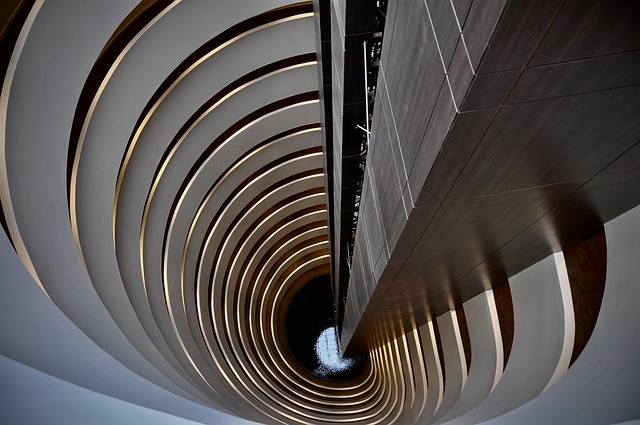3D printing has revolutionized architectural design by enabling rapid prototyping of physical models from digital blueprints, streamlining creative processes and enhancing collaboration in architectural visualization services. This technology facilitates quick testing, refinement and visualization of complex designs, reducing production time and costs while setting new industry standards for accuracy and clarity in communication of architectural concepts.
“Experience the future of architecture with rapid prototyping using 3D printing. This innovative technology is transforming the way designers visualize and bring their concepts to life, revolutionizing architectural design processes. From concept creation to precise models in record time, 3D printing offers unparalleled speed and flexibility. Discover how it unlocks endless creative possibilities for architectural visualization services, enhances collaboration, and streamlines construction processes, setting a new standard for industry professionals.”
Revolutionizing Architectural Design: The Power of 3D Printing
The advent of 3D printing technology has undeniably revolutionized architectural design processes, offering a game-changing approach to creating and visualizing structures. This innovative method allows architects and designers to transform their digital creations into tangible, three-dimensional models with remarkable speed and precision. With 3D printing, the once laborious task of crafting intricate architectural models becomes streamlined, enabling professionals to focus more on creativity and less on manual craftsmanship.
By utilizing advanced architectural visualization services, designers can bring their concepts to life in a matter of hours or days, as opposed to traditional methods that could take weeks or even months. This rapid prototyping not only accelerates the design process but also facilitates better communication between stakeholders, fostering collaboration and ensuring everyone involved is on the same page. The ability to print complex geometric forms and intricate details with ease has opened new avenues for architectural exploration, pushing the boundaries of what’s possible in both design and construction.
Rapid Prototyping: From Concept to Model in Record Time
Rapid prototyping with 3D printing has transformed the way architectural designs are brought to life, revolutionizing the process from concept to model in record time. This cutting-edge technology allows architects and designers to translate their creative visions into tangible, physical models swiftly and efficiently, marking a significant departure from traditional methods that often involved lengthy production cycles. With 3D printing, intricate architectural details can be replicated with remarkable precision, providing a valuable tool for visualization and presentation.
For architectural visualization services, rapid prototyping offers an array of benefits. It enables designers to test and refine their concepts quickly, making necessary adjustments based on real-world feedback. This iterative process fosters innovation and ensures that the final design aligns seamlessly with the initial vision. Moreover, 3D printed models offer a cost-effective alternative to traditional architectural scale models, making it easier for clients to visualize and appreciate complex designs in a tangible manner.
Unlocking Creativity: Customized Architectural Visualizations
Rapid prototyping with 3D printing has revolutionized the way architects present and refine their designs, unlocking a new level of creativity in architectural visualization services. This innovative technology allows for the quick creation of detailed, customized models, enabling architects to bring their concepts to life in a tangible manner. With 3D printing, every detail can be precisely replicated, from intricate structural elements to subtle design nuances, providing a more immersive and accurate representation of the final project.
By utilizing these advanced architectural visualization services, designers can explore various design iterations, experiment with different materials, and even incorporate client feedback seamlessly. The ability to swiftly produce customized models fosters an environment where creativity thrives, as architects can visually communicate their ideas with unprecedented clarity and sophistication, setting new standards in the industry.
Streamlining Construction: Benefits and Applications for the Industry
Rapid prototyping with 3D printing has revolutionized architectural models, offering a multitude of benefits that streamline construction processes and enhance industry standards. By enabling designers to quickly create detailed physical representations from digital blueprints, this technology reduces time-consuming manual drafting and modeling. The ability to produce complex geometric forms and intricate details in a fraction of the traditional time is a game-changer for architects and engineers.
This innovative approach has wide-ranging applications, from preliminary concept development to final construction documentation. Architectural visualization services benefit immensely, as 3D printing allows for rapid iteration and refinement of design ideas. This efficiency not only accelerates project timelines but also improves communication between stakeholders, leading to better overall outcomes. Moreover, the direct digital-to-physical connection ensures accuracy in scale and proportion, minimizing errors that often occur in manual drafting methods.
3D printing has transformed architectural design, offering a revolutionary approach to rapid prototyping that streamlines the process from concept to physical model. By unlocking new levels of creativity, this technology empowers architects and designers to visualize their ideas with unprecedented speed and accuracy. As the industry continues to embrace digital advancements, 3D printing is set to become an indispensable tool for architectural visualization services, revolutionizing construction and paving the way for innovative design solutions.
